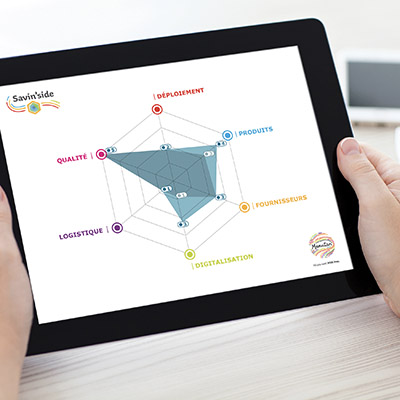Invoice payment terms play a crucial role in ensuring smooth operations, financial health, and business reputation, regardless of the industry. In today’s economic climate, businesses are more reliant than ever on cash flow, and prompt payments are key to achieving this stability. Respecting invoice payment terms is essential for fostering strong supplier relationships and maintaining operational efficiency. By adopting a proactive approach underpinned by clear communication and the right tools, companies can enhance their payment processes and minimise delays.
The importance of invoice payment terms
Effectively managing invoice payment terms not only ensures a steady cash flow but also helps avoid liquidity issues. Moreover, it is a key strategy for building balanced, long-term relationships with suppliers and partners.
Each country has its own regulations regarding invoice payment terms. Within the European Union, Directive 2011/7/EU aims to combat late payments in commercial transactions. This legislation stipulates a maximum payment term of 60 days from the invoice date unless otherwise agreed upon in the contract. However, a proposed revision of this directive seeks to reduce this term to 30 days, with exceptions for specific sectors such as seasonal products or slow-turnover goods.
Adhering to common payment terms is not only a matter of legal compliance but also a competitive advantage. In trade, optimised payment terms can help businesses avoid recovery fees or administrative penalties due to late payments, while also strengthening supplier relationships.
Best practices for optimising invoice payment terms
Optimising invoice payment terms requires procurement teams to leverage several strategies, ranging from establishing clear contractual frameworks to raising awareness among all stakeholders involved.
Establishing clear guidelines
The first best practice is to define clear rules for invoice payment terms. This includes systematically specifying payment options and terms in contracts, such as early payment discounts or payment in advance (PIA), outlining their conditions, and setting the start date for calculating deadlines (typically upon receiving the invoice). It is also useful to restate these rules on purchase orders to ensure all parties understand their obligations and to prevent recovery fees in case of non-payment. Establishing a precise payment timeline, such as net days or end-of-month (EOM) settlement, is crucial.
Automating processes
Next, businesses can deploy digital tools such as e-invoicing and accounting software to streamline invoicing and payment processing. These tools ensure invoices are automatically linked to purchase orders and approved more quickly, reducing manual errors and the risk of fraud.
They also help optimise processing costs and centralise data. Additionally, these solutions can be integrated with contract management tools, enabling automated scheduling of invoice deadlines, contract execution, and expense control. Automated alerts can also notify users of key milestones such as due dates or invoice receipt.
Collaborating with suppliers
Collaboration with suppliers is essential to ensure they adhere to high invoicing standards. This involves enforcing compliance with formal requirements (e.g., recipient details, common invoice format, purchase order reference) and helping suppliers understand that aligning invoices with orders benefits all parties. It’s also important to ensure invoices are issued promptly after the delivery of goods and/or services.
Ensuring accountability across the payment chain
Finally, respecting invoice payment terms requires accountability across the entire payment chain, including procurement, treasury, and accounting teams. Internal validation processes must be streamlined to avoid delays. Operational teams should accept or reject the receipt of goods and/or services as quickly as possible to prevent bottlenecks in invoicing. This also involves creating an efficient validation workflow within the organisation.
If payment terms are not respected, recovery proceedings may be initiated. In such cases, priority should be given to negotiating a mutually acceptable payment deadline. Note that late-payment penalties may also apply.
Late payments and their impact
In times of economic uncertainty, inter-business solidarity is critical for the overall functioning of the economy. Within this framework, invoice payment terms become a key factor for every business owner.
However, certain deviant behaviours can sometimes be observed, such as systematic delays in issuing purchase orders, overly complex and opaque requirements for invoice presentation, excessively long invoice validation processes, or withholding invoice payments under various pretexts.
Administrative disorganisation can partly explain some of these challenges during a crisis. The aim is not to overreact to minor delays but to identify and address any deliberate attempts to postpone payments as long as possible. Similarly, justified disputes should not be disregarded. Supplier non-compliance exists, and the procurement function must ensure that contracts are executed to perfection. Nevertheless, baseless disputes that significantly extend payment timelines undermine trust and harm business relationships.
The consequences of late payments are significant. They can destabilise business cash flow and even lead to insolvencies. This is especially true for small and medium-sized enterprises (SMEs), where disruptions in cash flow can mean the difference between solvency and bankruptcy. According to the European Commission, 25% of insolvencies within the European Union are caused by not getting paid on time.
Thierry Millon, Head of Research at Altares, explains: “Studies have shown that client payment delays increase the likelihood of supplier failure by 25%, and even by 40% when delays exceed 30 days. Tackling late payments is therefore essential for competitiveness and survival.”
In this context, optimising invoice payment terms is vital for stabilising procurement and ensuring business continuity. It enhances financial health and supplier relationships, aligning with a shared profitability strategy. Embracing best practices in this area is a strategic move that helps businesses get paid faster while fostering resilience and boosting competitiveness in the marketplace.









